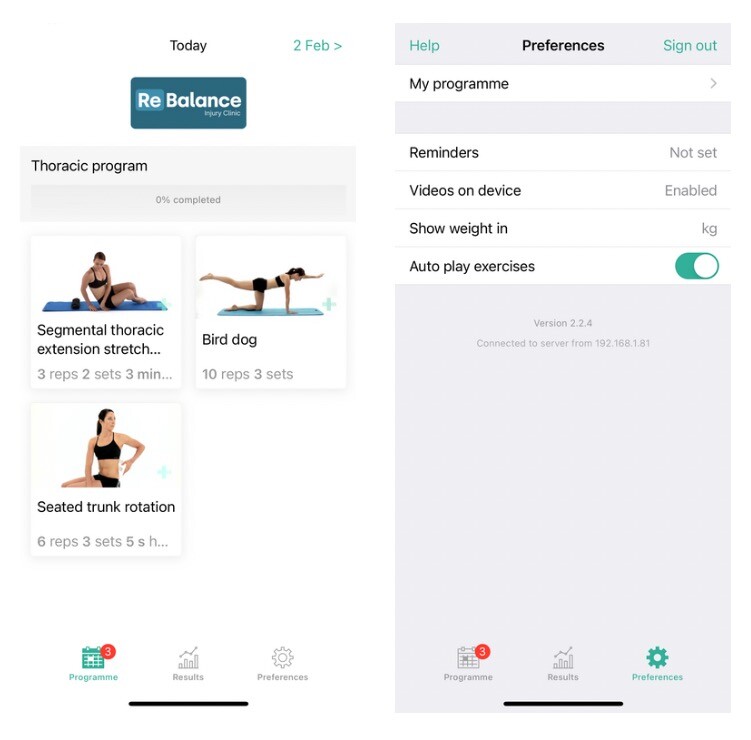What is Acupuncture and how does it work?
What is Acupuncture and how does it work?
![]() Apr 2023
Apr 2023![]() Advice & Information
Advice & Information![]() 5 minutes
5 minutes![]() Abby Raddon
Abby Raddon
What is Acupuncture?
At ReBalance Injury Clinic, we offer musculoskeletal or medical acupuncture treatment as part of our injury rehabilitation service.
Patients often ask us how acupuncture works. There are different directions you could explore here: an Eastern and Western stand-point.
Acupuncture is a form of alternative medicine that originated in China over 2,500 years ago. The Eastern ancient traditional Chinese acupuncture method involves inserting needles along specific meridian lines. The aim is to restore the flow of our ‘Qi’ life force energy (pronounced ‘chee’) to help promote health and overall balance. There is not a strong body of scientific research and evidence to support the existence of Qi.
Medical acupuncture is based on the principles of traditional acupuncture, but it incorporates a more scientific approach to the practice and is based more on the current understanding of human anatomy, physiology and pathology. It involves the insertion of needles into specific trigger points, or tight bands of muscle that cause pain or discomfort. By inserting needles into these trigger points, therapists aim to produce a clinical effect to alleviate musculoskeletal pain.
Medical acupuncture can be used to treat a wide range of conditions, including chronic pain, tension-type headaches, migraines, fibromyalgia, arthritis, acute pain, lower back pain, neck pain, post-operative pain and many others. We have a body of research articles below that support the use of acupuncture in many common musculoskeletal conditions.
The needles used in medical acupuncture are extremely thin, while some patients may experience a slight prick or pinch when the needle is inserted, most people report feeling very little discomfort. Once the needles are in place, they are typically left in for about 10-30 minutes, during which time patients may experience a sensation of warmth, heaviness, or tingling in the area where the needles have been inserted.

So how does medical acupuncture actually work?
While the exact mechanisms are not yet fully understood, there are several theories that have been proposed to explain its therapeutic effects. The exact mechanisms are still unknown and further research is needed, however, there is good evidence to suggest the beneficial impact that acupuncture has on musculoskeletal issues and pain.
There are many neurophysiological mechanisms which may explain why acupuncture may have an analgesic effect and reduce the pain we feel.
- Firstly, the needles in the skin and muscle can activate nociceptors (sensory receptors that detect signals from damaged tissue or threat of damage), which can induce pain relief and relaxation of the trigger points.
- Another response is that the needles stimulate the release of endorphins, the body’s natural painkillers. Endorphins are chemicals that are produced in response to stress or pain, and they can help to reduce pain and promote a sense of well-being.
- Another is that by inserting needles into specific trigger points, this stimulates improved blood flow and the production of collagen and other healing factors, which can help to promote tissue repair and regeneration.
- Acupuncture needles can modulate the activity of the autonomic nervous system, which regulates many of the body’s involuntary functions such as breathing, heart rate, and digestion. By stimulating specific points on the body, acupuncture may help to rebalance the autonomic nervous system and activate parts of our nervous system which can modulate pain and pain relief which can have a positive impact on many different aspects of health.

Despite the many theories that have been proposed to explain its therapeutic effects, there is still much that is not fully understood about how medical acupuncture works. However, there is a growing body of scientific research and clinical experience that highlight the benefits that it can be effective in reducing pain levels and treating a wide range of conditions. Acupuncture is now also approved by the NICE clinical guidelines.
If you are interested in exploring medical acupuncture as a treatment option, be sure to consult with a licensed medical professional who is trained in this practice. They can help you determine if acupuncture is right for you and develop a treatment plan that is tailored to your individual needs.
At ReBalance, all our therapists that offer this treatment are fully trained and licenced to practice Acupuncture.
Get in contact to find out more about how we can help you.

We have put together a range of studies that support the use of acupuncture as part of a multi-modal approach for patients suffering from common musculoskeletal symptoms including:
- Chronic pain (MacPherson et al. 2017, Vickers et al. 2017)
- Acute pain (Cohen et al. 2017, Jan et al. 2017, Murakami et al. 2017)
- Low back pain (Traeger et al. 2017, Wegner et al. 2017)
- Neck pain (Blanpied et al. 2017, Kjaer et al. 2017)
- Tension-type headaches (Busse et al. 2017, Linde et al. 2016)
- Migraines (Busse et al. 2017, Linde et al. 2016, Yang et al. 2016)
- Osteoarthritis (Busse et al. 2017, Lin et al. 2016, Woods et al. 2017)
- Postoperative Pain (Tedesco et al. 2017)
Contact Us
hello@rebalanceinjuryclinic.co.uk
All Enquiries: 07800 636101
Exeter Clinic: 01392 642229
Honiton Clinic: 01404 642062
Ilminster Clinic: 01460 510962
Explore More
Associated bodies
Follow Us
Contact Us
hello@rebalanceinjuryclinic.co.uk
All Enquiries: 07800 636101
Exeter Clinic: 01392 642229
Honiton Clinic: 01404 642062
Ilminster Clinic: 01460 510962
Explore More
Associated bodies
Follow Us
© 2022. ReBalance

















